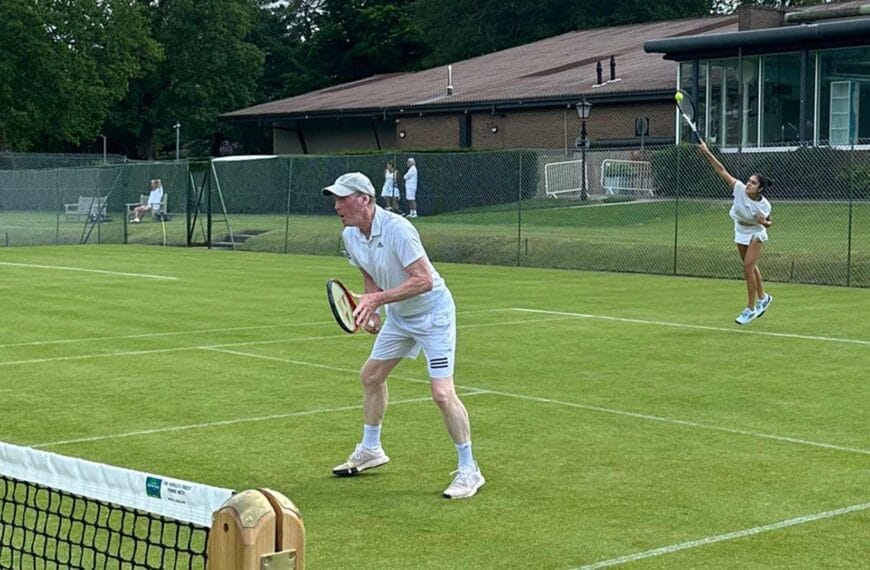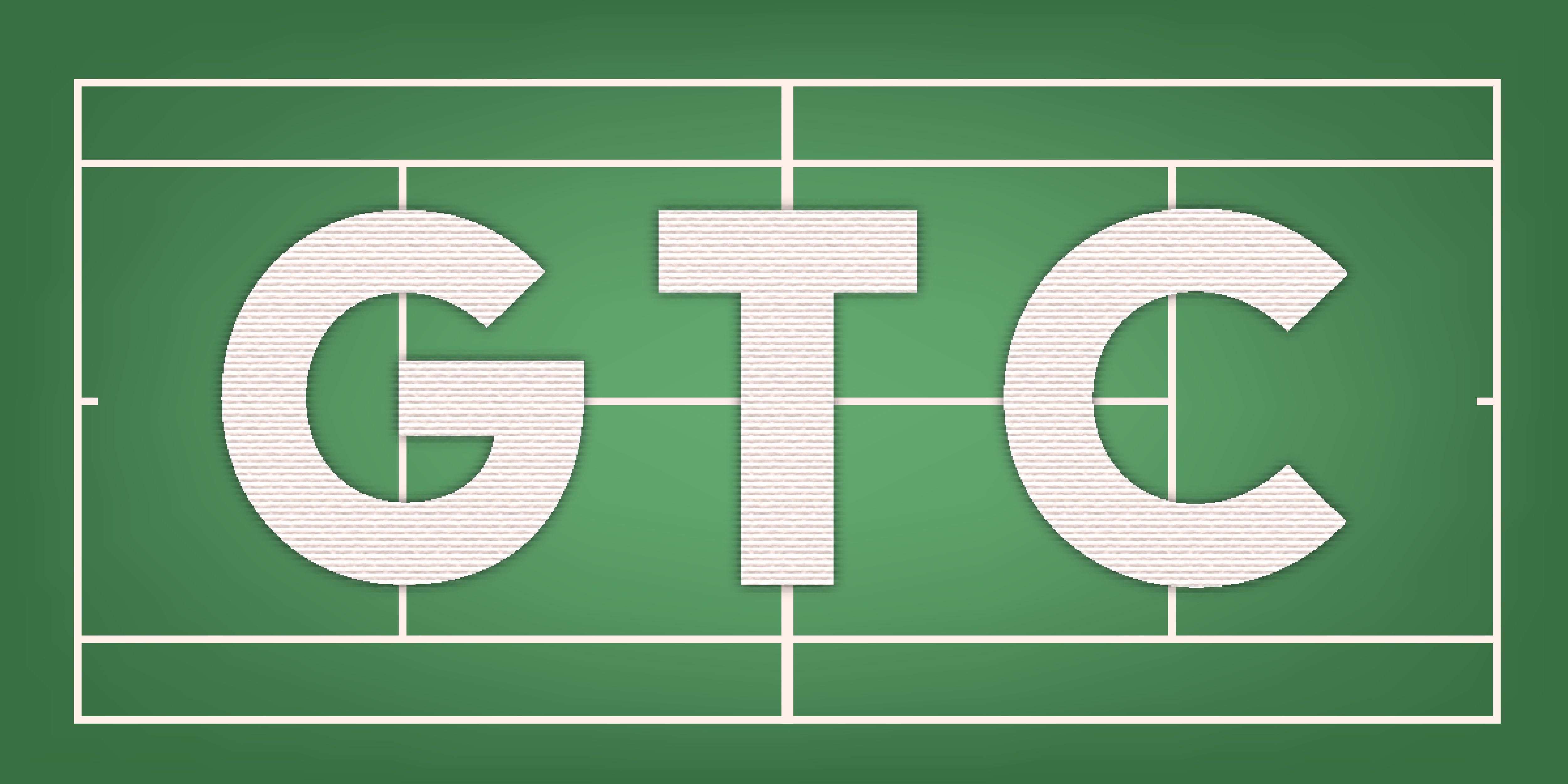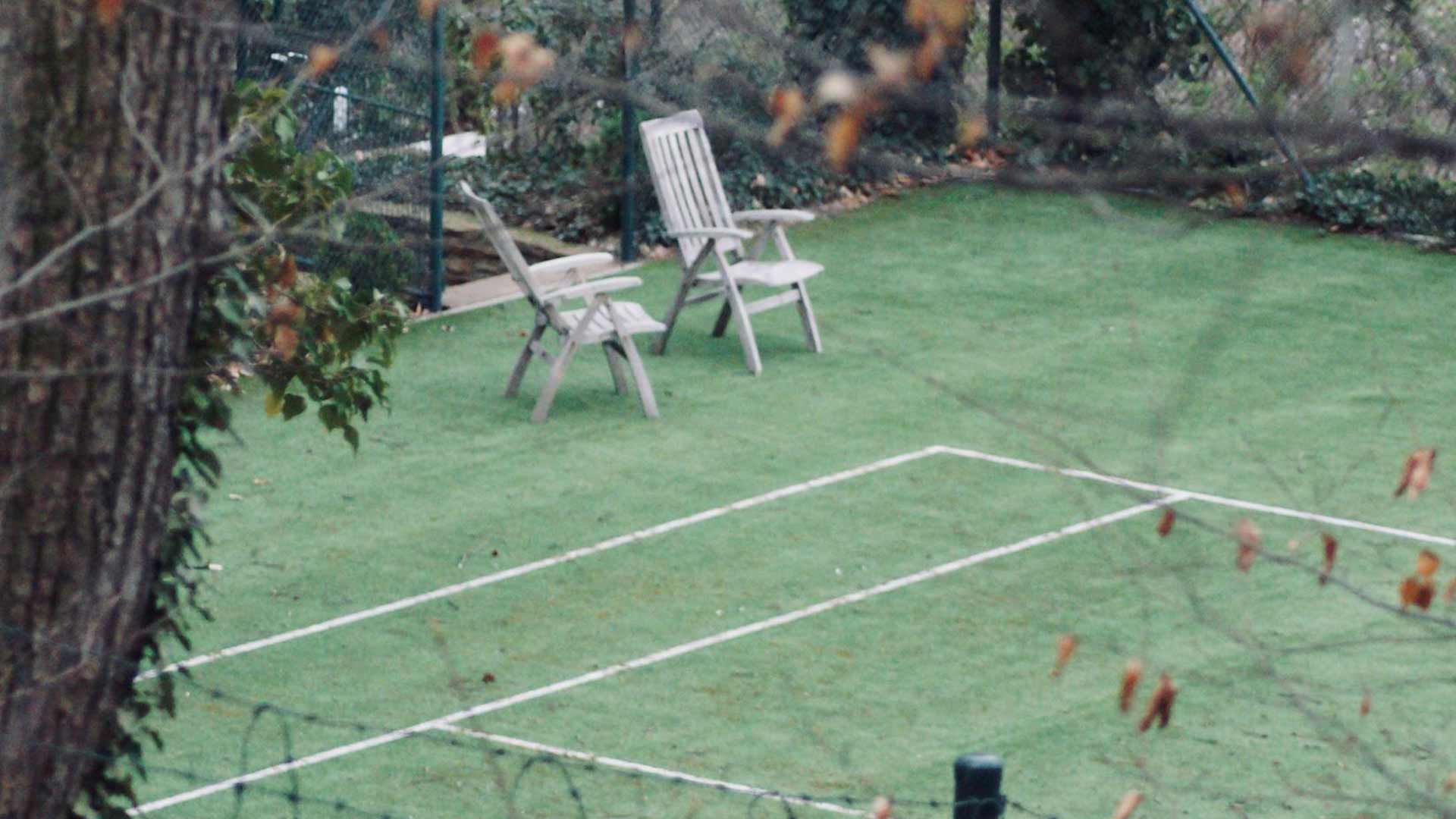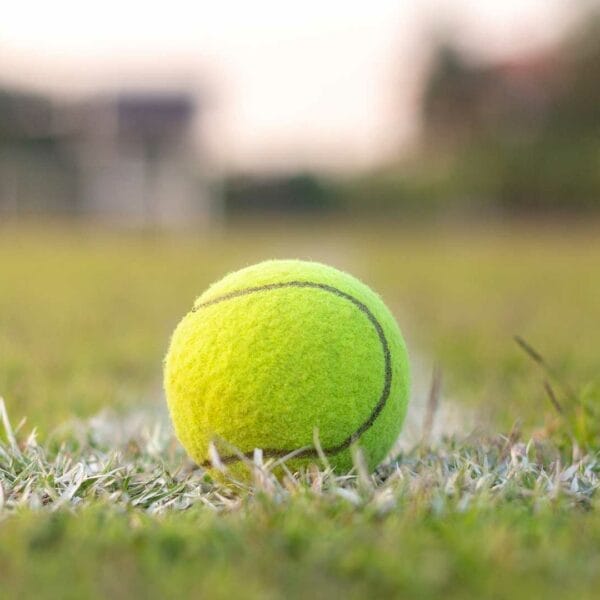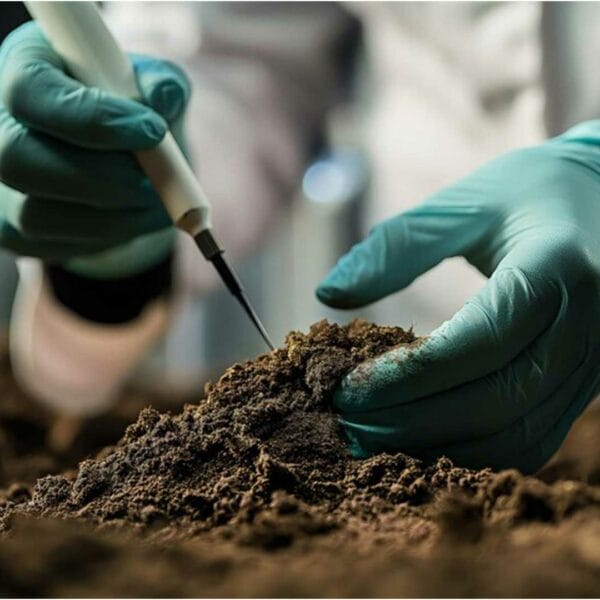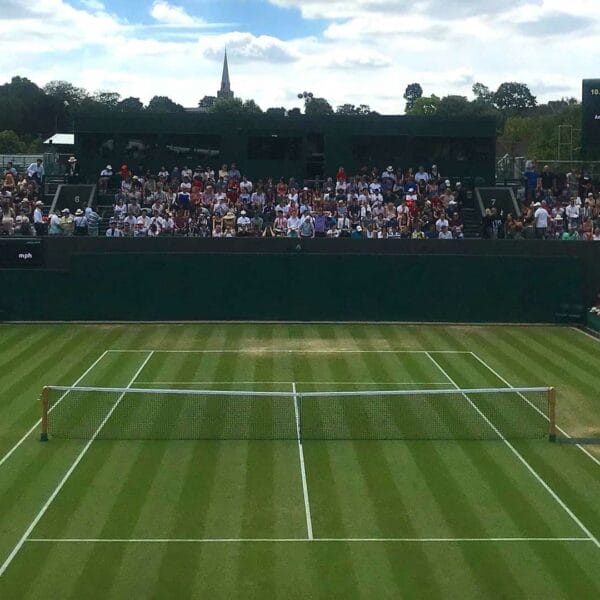Why is grass tennis or lawn tennis considered a fast surface?
Introduction to Grass Tennis Surfaces
Grass tennis surfaces have been a staple in the world of professional tennis for over two centuries, with the first Wimbledon Championship taking place in 1877 on a grass court. The unique characteristics of these surfaces have contributed significantly to their enduring popularity among players and spectators alike. In this section, we will delve into the history and evolution of grass tennis surfaces, exploring what makes them distinct from other types of tennis courts.
The term “grass” refers specifically to natural grass courts, which are typically made up of perennial ryegrass, bentgrass, or a combination of both. These surfaces are often found at prestigious tournaments such as Wimbledon, the All England Lawn Tennis Club, and the Queen’s Club Championships in London. While artificial grass surfaces exist, they do not possess the same playing characteristics as natural grass courts.
One of the primary reasons why grass tennis surfaces are considered fast is due to their low friction coefficient, which allows players to move quickly around the court without excessive resistance. This characteristic also enables balls to travel faster and farther when hit, making it essential for players to develop precise shot placement and timing. As we explore further, we will examine the various factors that contribute to the speed and bounce of grass courts, as well as how weather conditions can impact gameplay.
Characteristics of Fast Surfaces in Tennis
Fast surfaces in tennis are distinguished from slower surfaces by several key features. One primary attribute of fast surfaces is their low friction coefficient, which reduces the amount of resistance players experience when moving around the court. This allows players to accelerate quickly and change direction rapidly, making fast surfaces ideal for aggressive playing styles.
Another critical aspect of fast surfaces is their ball-bouncing properties. On fast surfaces, the ball tends to bounce higher and faster than on slower surfaces, requiring players to be highly skilled in terms of shot placement and timing. The speed and trajectory of the ball also make it more challenging for players to control their shots, particularly on serves and volleys.
In addition to their ball-bouncing properties, fast surfaces tend to have a harder and more even texture than slower surfaces. This provides a consistent playing experience for players, allowing them to anticipate the behaviour of the ball and plan their shots accordingly. However, the hardness of the surface can also lead to increased wear and tear on players’ joints and muscles, particularly during long matches.
The speed of fast surfaces is also influenced by the type of grass used to construct the court. Perennial ryegrass and bentgrass are commonly used varieties, each offering distinct playing characteristics. For example, perennial ryegrass tends to produce a slightly softer and more forgiving surface than bentgrass, while bentgrass courts are known for their exceptional speed and consistency.
Overall, the unique combination of low friction, high ball-bouncing properties, and hard texture makes fast surfaces in tennis an exciting and demanding challenge for players. Whether competing at the professional level or simply enjoying a game with friends, understanding the characteristics of fast surfaces is essential for developing effective strategies and improving overall performance.
Bounce and Speed of Grass Courts
The bounce and speed of grass courts are two critical factors contributing to their fast nature. When a ball lands on a grass court, it experiences a unique interaction between the blades of grass and the air surrounding it. This interaction causes the ball to behave differently than on other surfaces.
One of the most notable aspects of grass courts is their ability to produce a high-bouncing ball. The blades of grass compress and then release energy as the ball hits the ground, propelling it back up into the air. This phenomenon is often referred to as “rebound” or “trampoline effect.” As a result, the ball tends to bounce higher and faster on grass courts than on other surfaces, making it more challenging for players to control their shots.
The speed of grass courts is also influenced by the type of grass used to construct the court. Perennial ryegrass and bentgrass are two common varieties used in professional tournaments. Bentgrass courts, in particular, are known for their exceptional speed and consistency, producing a ball that bounces extremely high and fast. In contrast, perennial ryegrass courts tend to produce a slightly softer and more forgiving surface, although still relatively fast.
Weather conditions also significantly affect the bounce and speed of grass courts. Rain or excessive moisture can cause the grass to become soggy and uneven, leading to a slower and more unpredictable ball. Conversely, dry and sunny conditions can make the grass courts faster and more responsive, resulting in a higher-bouncing ball.
In addition to weather conditions, the maintenance and upkeep of grass courts can also impact their bounce and speed. Regular mowing, watering, and fertilization are essential to maintaining a healthy and consistent grass surface. Poor maintenance can lead to uneven growth patterns, compacted soil, and reduced ball speed.
Overall, the unique combination of high-bouncing balls and fast speeds makes grass courts an exciting and demanding challenge for players. Understanding the bounce and speed of grass courts is crucial for developing effective strategies and improving overall performance on these surfaces.
Effect of Weather Conditions on Grass Courts
Weather conditions have a profound impact on the behaviour of grass courts, significantly affecting the bounce and speed of the ball. Temperature, humidity, wind, and precipitation all play a crucial role in shaping the characteristics of grass courts.
Temperature fluctuations can alter the elasticity and resilience of the grass blades, influencing the rebound effect and, ultimately, the ball’s bounce. Higher temperatures can make the grass more brittle and prone to damage, while lower temperatures may slow down the grass’s recovery rate after being struck by the ball. Additionally, extreme temperature variations can lead to uneven growth patterns, further compromising the court’s consistency.
Humidity levels also affect the grass’s moisture content, which in turn impacts its responsiveness to the ball. High humidity can make the grass feel spongy and soft, reducing the ball’s bounce and speed. Conversely, low humidity can cause the grass to become dry and brittle, increasing the ball’s speed but potentially leading to uneven bounces.
Wind conditions can also influence the ball’s trajectory and speed on grass courts. Strong gusts can disrupt the airflow around the ball, causing it to deviate from its intended path. Furthermore, wind can also affect the grass’s growth pattern, creating uneven surfaces that compromise the court’s consistency.
Precipitation, whether rain or dew, can significantly alter the characteristics of the grass court. Excessive moisture can cause the grass to become waterlogged, leading to a slower and more unpredictable ball. On the other hand, light drizzle or mist can help maintain the grass’s health and consistency, ensuring a more even bounce and speed.
Understanding how weather conditions impact grass courts is essential for players, coaches, and tournament organizers alike. By recognizing the effects of temperature, humidity, wind, and precipitation, they can develop strategies to adapt to changing conditions and optimize their performance on these surfaces.
Comparison with Other Fast Surfaces like Hard Courts
Grass tennis courts are often compared to hard courts due to their similar classification as fast surfaces. However, there are distinct differences between the two surfaces that set them apart in terms of gameplay and player experience.
One key difference is the ball’s bounce and speed. On hard courts, the ball tends to bounce higher and faster than on grass courts, resulting in a more aggressive playing style. In contrast, grass courts produce a lower-bouncing ball with less speed, making them ideal for players who rely on finesse and strategy over raw power.
Another significant distinction is the level of spin and control required to navigate each surface. Hard courts reward players who can generate heavy topspin and slice, allowing them to dominate rallies and dictate the pace of the game. Grass courts, on the other hand, demand precision and touch, as players must carefully manipulate the ball to achieve optimal results.
The physical demands of playing on both surfaces also vary significantly. Hard courts tend to be more forgiving, allowing players to recover quickly from errors and maintain a high level of intensity throughout matches. Grass courts, however, require players to be more agile and adaptable, as the quick changes in bounce and speed can catch even the most experienced competitors off guard.
In terms of historical significance, both grass and hard courts have hosted numerous iconic tournaments and memorable matches. The All England Lawn Tennis Club’s grass courts at Wimbledon remain one of the most revered and prestigious venues in tennis, while hard courts have been the backdrop for countless epic battles at the US Open and Australian Open.
Ultimately, the choice between grass and hard courts comes down to personal preference and individual playing styles. While some players thrive on the fast-paced action and technical challenges presented by grass courts, others prefer the more straightforward, high-speed gameplay offered by hard courts. As the sport continues to evolve, it will be interesting to see how players adapt to the unique demands of each surface and push the boundaries of what is possible on the world’s fastest courts.
Impact of Grass Surface on Player Movement and Strategy
The unique characteristics of grass tennis courts necessitate a distinct approach to movement and strategy, setting them apart from other surfaces. One of the primary factors influencing player movement on grass courts is the reduced traction provided by the smooth, even surface. This requires players to adopt a more subtle and controlled style of movement, relying on agility and quick reflexes rather than brute force.
To compensate for the lack of grip, players often employ a “soft” footwork pattern characterized by shorter, lighter steps and a greater emphasis on balance and poise. This allows them to maintain stability and generate power without sacrificing control. Additionally, the need to adjust to the varying speeds and bounces on grass courts demands exceptional flexibility and adaptability from players.
In terms of strategy, grass courts favour players who can exploit the opponent’s mistakes and capitalize on opportunities created by the unpredictable surface. A well-placed shot that lands just beyond the baseline can prove particularly effective, as the opponent may struggle to return it due to the low-bouncing ball. Conversely, players who can consistently hit deep, penetrating shots can put pressure on their opponents and limit their time to react.
The grass court environment also prioritizes mental toughness and resilience. Players constantly face the threat of losing a point or a game due to an unforced error, so they must develop strategies to manage their emotions and stay focused under pressure. Effective communication with coaches and teammates can also be crucial in adapting to the unique demands of grass courts and developing a winning mindset.
Furthermore, the relatively short length of grasscourt points means that players must prioritize efficiency and effectiveness in their shot selection. A well-timed volley or passing shot can be the difference-maker in a match, highlighting the importance of anticipating and reacting to the opponent’s movements.
Overall, the combination of reduced traction, variable bounces, and high-pressure situations makes grass courts a challenging yet rewarding environment for players to compete in. By mastering the intricacies of movement and strategy on these surfaces, top players can gain a significant advantage over their opponents and achieve success in some of the most prestigious tournaments in the sport.
Historical Significance of Grass Courts in Tennis
Grass courts have been an integral part of tennis history since its inception. The first Wimbledon Championship was held on a grass court at the All England Lawn Tennis and Croquet Club in 1877. The iconic tournament has continued to be played on grass courts ever since, earning its reputation as one of the most prestigious events in the tennis calendar.
The British aristocracy initially encouraged the use of grass courts, as they preferred the aesthetic appeal and social status associated with playing on natural turf. However, the unique characteristics of grass courts soon became apparent, requiring players to adapt their styles and strategies to succeed. As the sport evolved, grass courts became synonymous with traditional tennis values, emphasizing skill, finesse, and sportsmanship.
Throughout the early 20th century, grass courts dominated the tennis landscape, hosting numerous Grand Slam tournaments, including Wimbledon, the US Open, and the French Championships. The introduction of hard courts in the mid-20th century marked a shift towards faster surfaces, but grass courts remained a staple of the sport, particularly in Europe and North America.
One of the most notable aspects of grass courts is their ability to host high-quality matches despite the challenges posed by weather conditions. Rainfall, wind, and temperature fluctuations can significantly impact the speed and bounce of the ball, making each match a unique test of players’ endurance and adaptability.
In recent years, there has been a concerted effort to preserve the historical significance of grass courts, with many clubs and organizations working to restore and maintain their original charm. The development of new technologies and maintenance techniques has helped to improve the quality and consistency of grass courts, ensuring they remain a viable option for professional and amateur players alike.
As tennis continues to evolve, the legacy of grass courts remains an essential part of the sport’s heritage. They provide a connection to the past while inspiring future generations of players to master the art of competing on these demanding surfaces.
Modern Developments and Maintenance of Grass Courts
Modern dtechnological advancementshave significantly improved the quality and consistency of grass courts, enabling them to remain a popular choice for professional and amateur players alike. One key innovation has been the introduction of advanced irrigation systems, which allow for precise control over watering schedules and soil moisture levels.
This has enabled groundskeepers to optimize the growth and health of the grass, resulting in faster drying times and reduced risk of waterlogging during inclement weather. Additionally, modern mowing techniques and specialized equipment have made it easier to maintain even, consistent heights across the entire court.
The use of advanced fertilizers and soil conditioners has also enhanced the overall quality of the grass, promoting healthy growth and reducing the need for frequent re-seeding. Furthermore, the implementation of sophisticated drainage systems has minimized the impact of heavy rainfall, allowing play to resume quickly after rain delays.
Many clubs and organizations are now adopting more sustainable maintenance practices, such as using eco-friendly products and minimizing waste. This not only benefits the environment but also helps reduce the costs associated with maintaining large areas of grass.
The integration of data analytics and sensors has also revolutionized the way grass courts are maintained, enabling groundskeepers to monitor factors such as soil temperature, humidity, and grass density in real time . This allows for proactive adjustments to be made to ensure optimal playing conditions, further enhancing the player experience.
Overall, the combination of technological innovations and best-practice maintenance techniques has ensured that grass courts continue to thrive, offering a challenging yet rewarding surface for players of all levels. By embracing these advances, the sport of tennis can continue to celebrate its rich heritage while pushing the boundaries of what is possible on grass courts.
Challenges Faced by Players on Fast Grass Surfaces
Playing on fast grass surfaces presents several challenges for tennis players, requiring a unique set of skills and strategies to succeed. One of the primary difficulties is adapting to the quick bounce and speed of the ball, which demands exceptional hand-eye coordination and reaction time.
The fast pace of grass courts forces players to make rapid decisions, often within fractions of a second, to hit accurate shots and cover the court efficiently. This requires a high level of physical fitness, agility, and endurance, as well as mental toughness to cope with the pressure of competing at a fast-paced tempo.
Another challenge faced by players on grass courts is dealing with the unevenness and unpredictability of the surface. When wet, the grass can become slippery, making it difficult to generate power and control shots. Additionally, the grass’s varying textures and densities can affect the ball’s bounce, leading to inconsistent outcomes.
Players must also contend with the strong winds and changing weather conditions that often accompany outdoor matches on grass courts. These environmental factors can significantly impact the game, forcing players to adjust their strategy and technique accordingly.
Furthermore, the fast nature of grass courts puts a premium on serving and volleying skills. Players need to be able to take advantage of short rallies and capitalize on opportunities to end points quickly. This requires a high level of precision and accuracy in both serves and volleys, as well as the ability to anticipate and react to the opponent’s movements.
In addition to these technical challenges, players on grass courts must also navigate the psychological demands of competing on a fast surface. The pressure to perform under the spotlight, combined with the physical and mental exhaustion of playing at a high intensity, can take a toll on even the most experienced players.
Ultimately, mastering the challenges of fast grass surfaces requires a deep understanding of the game, a high level of skill and athleticism, and a strong mental approach to competition. Players who can adapt to the unique demands of grass courts will find themselves well-equipped to succeed in this demanding and rewarding environment.
Conclusion: Why Grass Tennis is Considered a Fast Surface
In conclusion, grass tennis surfaces are widely regarded as one of the fastest surfaces in professional tennis due to their unique characteristics, which include a low-bouncing ball, quick court speed, and unpredictable weather conditions. The combination of these factors demands exceptional agility, speed, and strategy from players, making it an ideal test of athleticism and skill. As highlighted throughout this analysis, grass courts have been a staple of tennis history, hosting numerous prestigious tournaments, including Wimbledon, where they continue to be a major draw for fans and players alike. By understanding the intricacies of grass tennis surfaces, we can appreciate the challenges faced by top athletes and the importance of adapting to different playing conditions, ultimately elevating the sport to new heights. With its rich history, technical nuances, and physical demands, grass tennis remains a thrilling and captivating aspect of the game, cementing its reputation as a true benchmark of excellence in professional tennis.




